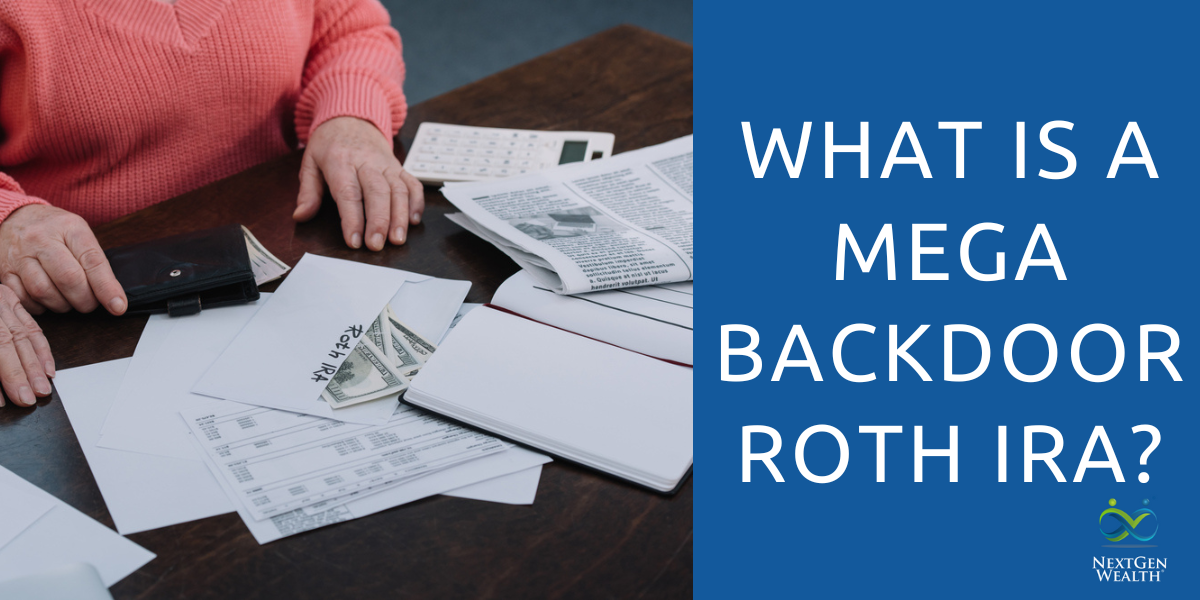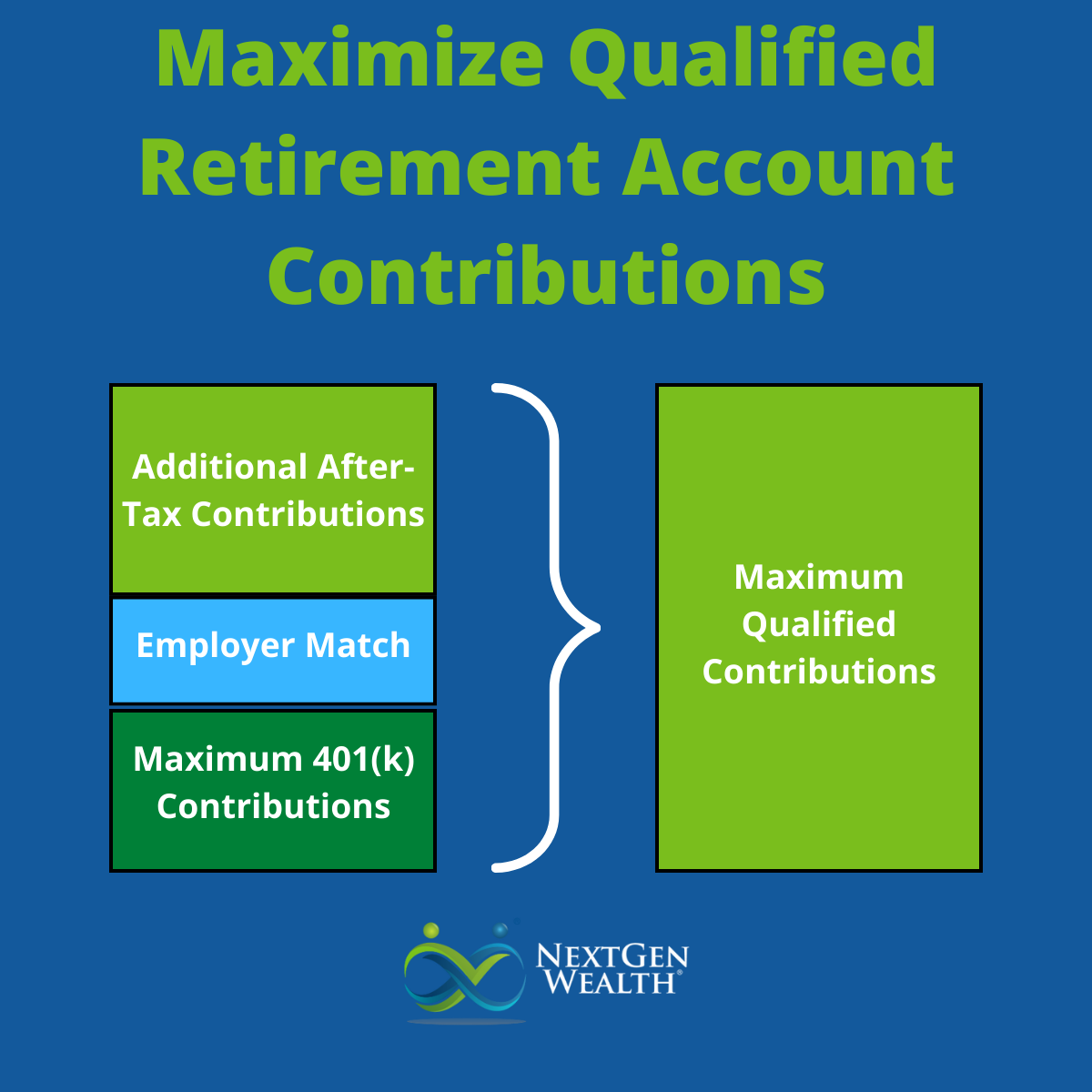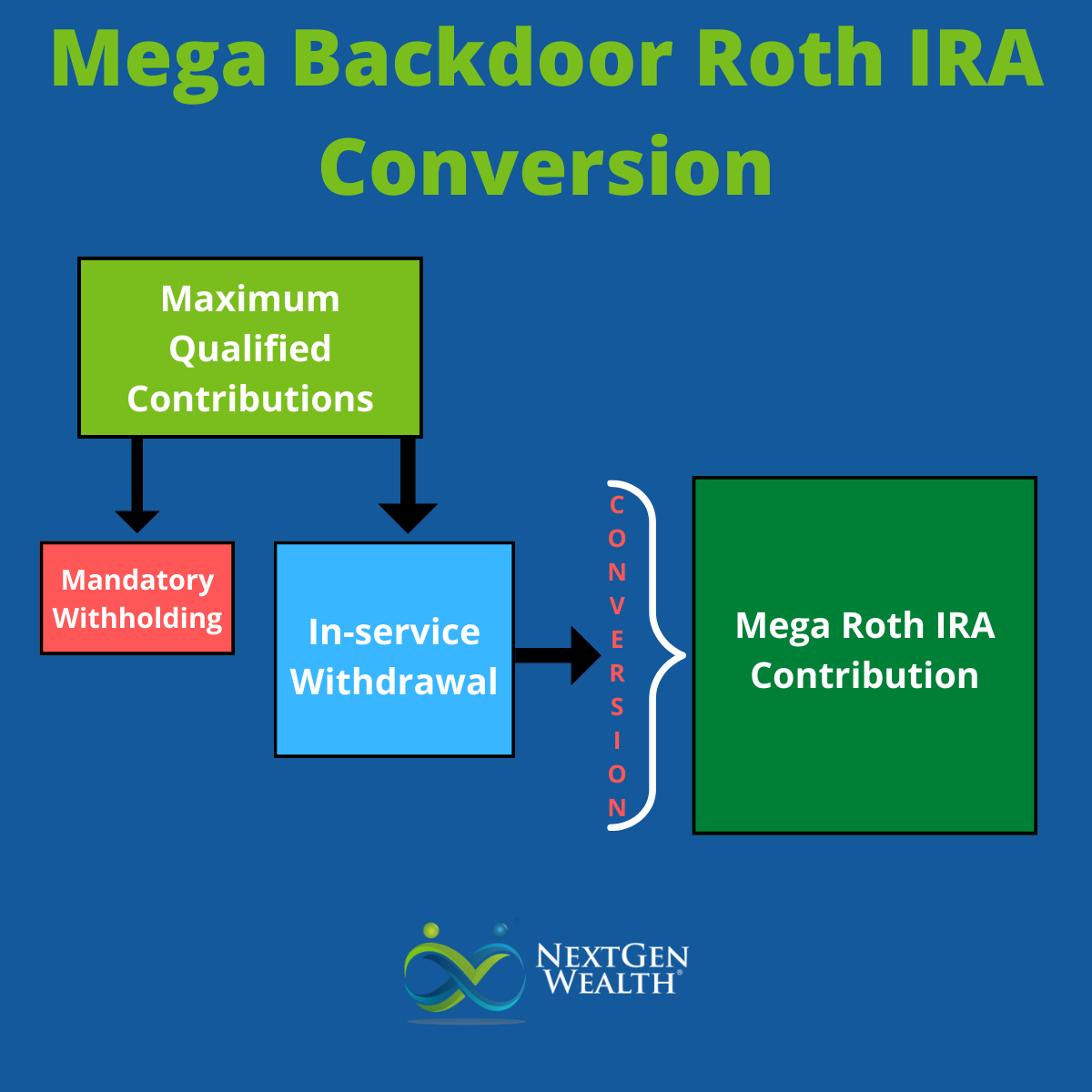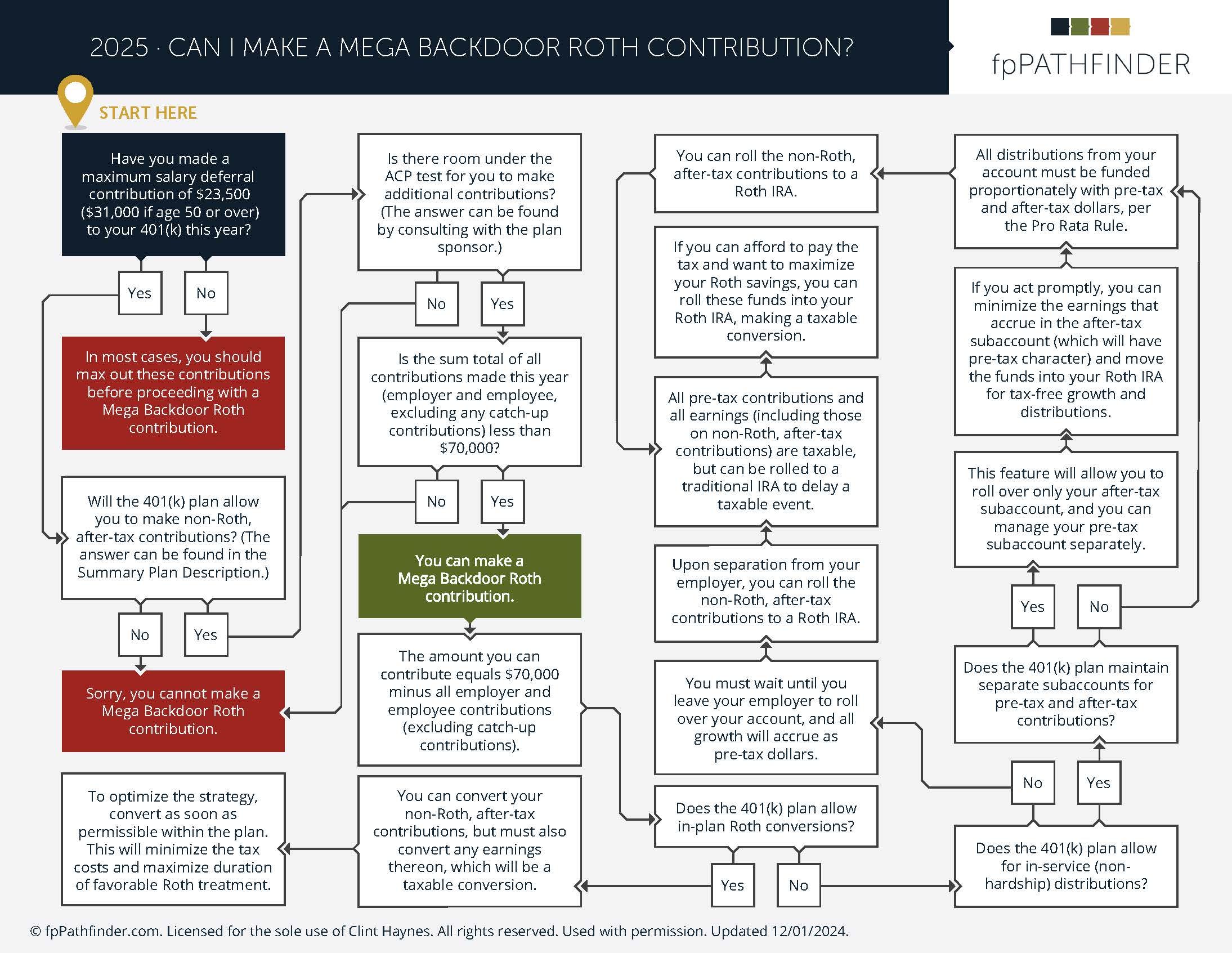What is a Mega Backdoor Roth IRA?
This post was last updated on December 31, 2024, to reflect all updated information and best serve your needs.
 In addition to sounding cool, mega backdoor Roth conversions can be super helpful for long-term tax-savings. For high income earners, having the ability to get more money into a Roth account now will make retirement income planning much easier.
In addition to sounding cool, mega backdoor Roth conversions can be super helpful for long-term tax-savings. For high income earners, having the ability to get more money into a Roth account now will make retirement income planning much easier.
Unfortunately, not everyone can take advantage of a mega backdoor Roth conversions. If you can, it could be highly beneficial for helping you reach your retirement goals.
A Primer on Qualified Accounts, IRAs, and Retirement Planning
Before we get into the nitty-gritty of making a mega backdoor Roth IRA conversion work for you, let’s take a closer look at IRAs and retirement planning in general. This way you can make sure you know what to expect, and you can determine if this is an option for you.
Qualified Retirement Accounts: 401(k), Traditional IRA, SEP, etc.
A good way to save money for retirement is with a “qualified account” such as a 401(k) or traditional IRA. There are some essential elements that you need to understand about these accounts. All these accounts allow you to deduct the contributions you make in the account from your adjusted gross income (AGI), invest the money for growth, and withdraw in retirement.
This allows you to defer paying taxes until later when you pull the money out. You’ll get a deduction now in your working years, and then you’ll pay the taxes later in retirement.
No Income Limit
Whether you’re a struggling artist, a middle manager, or a doctor, everyone can contribute to a traditional IRA or other qualified plan. However, the contribution might not be tax-deductible depending on your level of income.
Required Minimum Distributions (RMDs)
Once you reach 73 years old (changes to 75 in 2033), you must start taking money out of your IRA or other qualified accounts. These are called required minimum distributions or RMDs. The exact amount varies based on the account balance, life expectancy tables, and other factors.
Even if you have plenty of cash on hand during your golden years, you’ll be required to pull funds from your traditional IRAs and 401(k)s whether you want to or not. Technically, you can then re-invest this money rather than spending it. However, you’ll have to withdraw the RMD and pay taxes on that withdrawal regardless.
This can create some major issues. First, RMDs will raise your AGI which could push you into a higher tax bracket, raise your Medicare premiums, or cause your Social Security benefits to be taxed. Those are all less than fun; this is where the Roth IRA comes in handy.
Roth IRA
Since 1997, individuals can add money to a Roth IRA. Roth IRAs work a little differently than a traditional, qualified account in some important ways. First, they flip around the order of when you pay taxes. With a Roth account, you pay taxes now as ordinary income and then pull the money out tax-free in retirement.
Goodbye RMDs!
Roth IRAs are not subject to RMDs. The distributions are not included in your AGI either. Therefore, you don’t pay taxes on distributions from Roth IRAs in retirement (after age 59-1/2).
It is important to note that you may have a Roth account, also called a “designated Roth” account, as part of your retirement plan. With the changes in SECURE 2.0, those Roth accounts are no longer subject to RMDs and still have the advantage of tax-free withdrawals in retirement.
The lack of RMDs allows the balance grow and so you can pass it on to your heirs. Otherwise, you’d have to pull the money out and gift it, spend it, or reinvest it elsewhere.
Income Restrictions
Unfortunately, if you make too much money in a given year, you can’t contribute to a Roth IRA. For individuals making more than $150,000 (Single/Head of Household) or $236,000 (Married Filing Jointly) in 2024, you are subject to phaseouts and can’t max out yor Roth IRA.
Once you reach an income of $165,000 (Single/HoH) or $246,000 (MFJ), you can't contribute to a Roth IRA.
Roth Conversions
Thankfully, you can do a Roth conversion to get around these income restrictions. This strategy is the backbone of a mega backdoor Roth IRA conversion. In short, a Roth IRA conversion allows you to take a traditional account, transfer it to a Roth IRA (directly or indirectly), pay the taxes now, and then withdraw money tax-free in retirement.
Mega Backdoor Roth IRA Conversions
If you’ve analyzed your situation and found that a Roth conversion is right for you, then you might also benefit from a mega backdoor Roth conversion. A mega backdoor Roth may allow you to squeeze up to $70,000 into a Roth IRA.
In other words, you could contribute an additional $46,500 (2025) to your retirement account using certain rules (if available) and convert that to a Roth IRA. Considering the annual cap for Roth IRAs is currently $7,000 ($8,000 if you’re over 50) in 2025, this is a big deal.
However, not everyone can do this. There are strict guidelines and several steps needed to make it a “mega” Roth conversion. This is a powerful strategy, so knowing the basics could be really beneficial.
The flow chart below (not as scary as it looks) details all the different questions you need to answer to decide if you can complete a mega backdoor Roth conversion.
Note: You may need to click on the image to expand it.
Key Ingredients to a Mega Backdoor Roth IRA Conversion
The main pieces to this strategy are getting enough money into your account to max out your qualified contributions for the year, have cash on hand to pay the taxes, and be able to take in-service withdrawals.
Maximizing Total Contributions
The first real step is to contribute the maximum amount of money into your qualified retirement account. We’ll use a 401(k) as an example. You would need to contribute the maximum amount, add employer match (if applicable), and then make additional after-tax contributions.
For 2025, the maximum amount that you can directly contribute to a 401k is $23,500 or $31,000 if you’re over 50 (Catch up Contributions of $7,500). Individual contributions are limited to $70,000 for all qualified retirement accounts combined. The extra comes from employer matching and other contributions.
To maximize a mega backdoor Roth IRA to work, you will have to make after-tax contributions to your 401(k) plan. Since you can’t go over the maximum threshold, you will need to do some math to find out how much you can add.
For example, if you contribute the maximum amount to your 401(k) in 2025 ($23,500), and your employer matched 10% ($2,350), then you would add $44,150 as an after-tax contribution to max out your annual contributions ($23,500 + $2,350 + $44,150 = $70,000). If you don’t get an employer match, then that will change things a bit.

401(k) That Allows After-Tax Contributions
Many 401(k) plans allow you to make after-tax contributions into the account. According to a recent survey, less than half (43%) of all 401(k) plans enable employees to utilize this type of contribution.
In-Service Withdrawals and Rollovers
You’ll need to be able to complete an in-service withdrawal or partial rollover. Many retirement plans allow for in-service withdrawals. If your employer plan doesn’t allow for that, you will need to wait until you leave your job to use this strategy.
You’ll want to call your 401(k) provider to determine if your employer allows for after-tax 401(k) contributions and in-service distributions. All this information should be found in your retirement plan summary plan description as well.
Cash for Mandatory Withholding
Your 401(k) provider is required to withhold 20% for taxes for any distributions made directly to you. To avoid a penalty, you’ll need cash on hand to “replenish” the amount withheld. If your plan allows partial in-service rollovers, then there won’t be any mandatory withholding.
The Mega Backdoor Roth IRA Conversion Process
Now that we’ve checked and rechecked, we’re ready to rock. Keep in mind that everything needs to be done in order and within specific timeframes. If it gets messed up, then you could get hit with tax penalties and that’s not good!
Complete the Necessary Contributions
Depending on your income and employer match, this may take most of the year to do. Often Roth conversions are completed closer to the end of the year. By that time, we know how much you’ve made for the year (important for AGI thresholds, etc.) and know how much after-tax contributions to make.
Also, if you have a match, you don’t want to totally front-load your 401(k) contributions because you might miss out on the match. That’s like throwing away money!
Once you’ve maximized your individual contributions and employer contributions, then you’ll need to “top off” your contributions for the year. Do the calculations we discussed earlier and make your after-tax contributions.
Open a Roth IRA
If you don’t already have a Roth IRA, then you’ll need to open one. This is an easy step, but you want to make sure it’s established and ready to go.
Initiate the In-service Withdrawal or Rollover
Once you’re ready, its time to take the in-service withdrawal. Keep in mind that your plan administrator or custodian will withhold 20% for taxes. If you’re able to do a rollover for the conversion, then there’s no issue with withholding.
If the funds are dispersed directly to you, you have to deposit them into the Roth IRA within 60 days to avoid a penalty. If possible, this would be done immediately so there’s no question.
Pay the Taxes
Upon completing the transfer, you’ll need to pay the taxes on the balance that was converted from a traditional account to Roth. You won’t have to pay additional taxes on the after-tax contributions you made to “top off” your 401(k) or other qualified account.

Let it Compound Tax Free!
That’s it! Ideally, you’ll be able to maximize your mega backdoor Roth IRA conversion and stuff a whole $70,000 into your Roth accounts for the year! Now it will be able to grow tax and RMD free until you use it or pass it on. This strategy is a bit complicated, but it can be well worth it to save you on taxes in the long run.
Getting Help from a Professional
Even if you plan to do this on your own, we highly suggest you get advice from a tax professional and a financial planner. Everyone’s situation is unique, so you don’t want to accidentally create a tax problem for yourself by trying to save money on taxes. Also, you want to have peace of mind that everything was done correctly the first time.
While a mega backdoor Roth IRA conversion may sound appealing, you need to be sure that you have all your bases covered. Feel free to contact us if you have questions or would like some help with this process.




